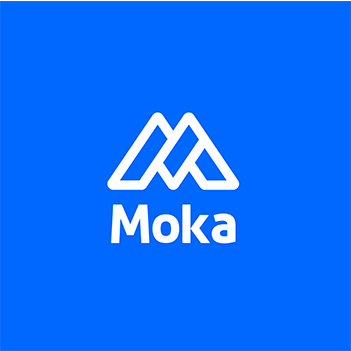Creating a Seamless Candidate Experience with Proven Strategies

In 2025, creating a positive candidate experience isn’t just a nice-to-have—it’s essential. Job seekers expect more than just a paycheck; they want respect, transparency, and meaningful interactions throughout the hiring process. Did you know that 50% of candidates have turned down job offers due to poor experiences? On the flip side, a seamless candidate experience can make all the difference. Candidates who feel valued are more likely to accept offers and even recommend your company to others. This not only boosts recruitment success but also strengthens your employer brand, helping you attract top talent effortlessly. By adapting to changing expectations and implementing thoughtful strategies, you can create an overall candidate experience that leaves a lasting impression.
Key Takeaways
Be flexible. Give choices for remote or mixed work to attract talent.
Talk often. Update candidates during hiring to build trust.
Be understanding. Answer worries about job safety to improve their experience.
Use tech tools. AI and automation can make hiring faster and better.
Share feedback. Give helpful tips after interviews to help candidates improve.
Understanding Candidate Expectations
Evolving Needs in 2025
Flexibility and remote work preferences
In 2025, flexibility isn’t just a perk—it’s a priority. You’ve probably noticed how remote work has reshaped the way people think about jobs. Candidates now expect options like hybrid schedules or fully remote roles. Research even shows that employees value flexible working conditions almost as much as an 8% salary increase. For younger generations, like Gen Z, flexibility and autonomy often outweigh traditional workplace values. Nearly half of recent graduates reject job offers that don’t include hybrid or flexible structures.
Evidence | Description |
|---|---|
Employee Priorities | Employees value flexible working conditions almost as much as an 8% salary increase. |
Graduate Preferences | Nearly half of graduates reject job offers without hybrid or flexible options. |
Gen Z Attitudes | Gen Z prioritizes flexibility and autonomy over the classic '9-to-5' mindset. |
If your company doesn’t offer this kind of flexibility, you risk losing top talent to competitors who do. Adapting your strategies to meet these expectations can significantly improve the candidate experience.
Faster and more transparent hiring processes
Let’s face it—no one likes waiting. Candidates want hiring processes that are quick and clear. In fact, 60% of job seekers abandon applications because they take too long. Regular communication is also a must. While 78% of candidates expect updates during the hiring process, only 37% actually receive them. This gap can leave a negative impression.
You can stand out by keeping candidates informed every step of the way. Whether it’s scheduling interviews online (a preference for 70% of job seekers) or providing detailed feedback post-interview, these small actions show respect for their time. And respect matters—44% of candidates view efficient hiring processes as a sign of it.
28% of candidates find poor communication the most frustrating part of hiring.
70% of rejected candidates say detailed feedback would leave a positive impression.
78% of candidates expect regular updates, but only 37% receive them.
Employer Empathy and Support
Addressing candidate concerns about job security
Job security is a big deal for candidates today. Many worry about layoffs or unstable work environments. As an employer, you can ease these concerns by being transparent about your company’s stability and long-term goals. Candidates want to feel confident that they’re joining a secure workplace.
Empathy plays a huge role here. Did you know that 54% of employees left their previous jobs because their bosses didn’t show empathy for work struggles? Showing that you care about their concerns can make a lasting impact on the candidate experience.
Statistic | Description |
|---|---|
54% | Left a previous job due to lack of empathy from their boss regarding work struggles. |
49% | Left a previous job due to lack of empathy from their boss regarding personal struggles. |
Focusing on growth and development opportunities
You’ve probably heard this before—candidates don’t just want a job; they want a career. Growth and development opportunities are key factors in their decision-making process. Highlighting your company’s training programs, mentorship opportunities, or clear career paths can set you apart. When candidates see that you’re invested in their future, it enhances their overall experience and makes them more likely to accept your offer.
By addressing these evolving needs and showing empathy, you can create a candidate experience that stands out in 2025.
Leveraging Technology for a Positive Candidate Experience

AI and Automation in Hiring
Streamlining resume screening and job matching
You know how tedious resume screening can get. AI takes that burden off your shoulders by automating repetitive tasks like resume screening and interview scheduling. This not only saves time but also ensures you focus on the best candidates. AI tools analyze resumes quickly, matching candidates to roles based on specific skills and experiences. Plus, they enhance engagement by keeping candidates informed through AI-driven communication tools.
Automating these processes improves accuracy in candidate matching.
Companies using AI in hiring report 30% greater profits and 18% higher revenue compared to those that don’t.
Reducing time-to-hire with automated workflows
Time is everything in recruitment. Automated workflows help you reduce time-to-hire significantly. For instance, PwC cut their hiring time by 54% by automating various stages of the process. Automated resume scoring also improved their candidate conversion rates by 12.5%. These tools streamline your hiring process, freeing up time for more strategic tasks.
Virtual Tools for Engagement
Video interviewing and virtual assessments
Video interviewing has become a game-changer. It’s convenient, efficient, and lets you connect with candidates no matter where they are. Virtual assessments add another layer by evaluating skills in real-time. AI-driven chatbots can also speed up screening while providing a conversational experience. Personalizing these interactions with videos from hiring managers makes the process even more engaging.
Interactive career websites for candidate engagement
Your career website is often the first impression candidates get of your company. Make it count. Share behind-the-scenes content like photos and videos of daily life at your workplace. Highlight employee stories to make your company relatable. You can also include interactive features like polls or live Q&A sessions to foster engagement. A visually appealing, mobile-friendly design ensures candidates have a seamless experience.
Data-Driven Recruitment Strategies
Using analytics to improve hiring outcomes
Data is your best friend when it comes to refining your hiring strategies. Use metrics like time-to-hire and candidate source effectiveness to make informed decisions. Companies that use data analytics in recruitment see a 30% improvement in hiring quality. This approach helps you objectively choose the best candidate while promoting diversity and inclusion.
Identifying bottlenecks in the hiring process
Bottlenecks can slow down your hiring process. Map out your internal workflows to spot inefficiencies. Track decision-making flows to see where things stall, like during candidate screenings. Gather feedback from your team to uncover recurring issues. Once you identify patterns, you can implement changes to create a smoother, more efficient hiring process.
By leveraging technology, you can create a candidate experience that’s efficient, engaging, and tailored to today’s expectations. These strategies not only improve hiring outcomes but also set the stage for an exceptional onboarding process.
Personalized and Transparent Communication
Tailored Candidate Interactions
Using CRM tools for personalized outreach
Personalized outreach can transform your candidate experience. With CRM tools, you can tailor every interaction to meet individual needs. These tools use AI to adjust the timing and content of messages based on how candidates engage with your company. For example, predictive platforms analyze past data to recommend the best outreach channels. AI-powered chatbots also play a key role by engaging candidates 24/7, answering questions, and even scheduling interviews.
Imagine sending candidates articles or videos that align with their interests. Content recommendation engines make this possible, helping you build meaningful connections. Personalized communication doesn’t just make candidates feel valued—it also boosts your employer branding. In fact, organizations that use personalized strategies are three times more likely to improve their talent acquisition efforts.
Addressing individual candidate needs
Every candidate is unique, and addressing their specific needs can elevate their experience. Whether it’s offering flexible interview times or discussing career growth opportunities, small gestures make a big difference. Personalized interactions keep candidates engaged throughout the hiring process. Studies show that 58% of candidates are more likely to stay engaged when communication feels tailored to them. This approach not only enhances their experience but also sets the stage for a smoother onboarding process.
Transparency in the Hiring Journey
Providing clear timelines and updates
Transparency is key to building trust during the hiring process. Candidates want to know what’s happening and when. Providing clear timelines and regular updates shows respect for their time and effort. For instance, you can share a detailed hiring schedule upfront and stick to it. This simple step can significantly improve your candidate experience.
Did you know that 71% of professionals are more likely to engage with a company that communicates clearly? Keeping candidates informed strengthens your employer branding and ensures they feel valued throughout the journey.
Sharing constructive feedback post-interview
Feedback is a powerful tool for improving the candidate experience. Sharing constructive insights after interviews helps candidates grow and leaves a positive impression, even if they don’t get the job. For example, you might highlight their strong communication skills or suggest areas for improvement, like gaining experience with specific software.
Providing feedback also reflects your commitment to professional development, which enhances your employer branding. Candidates appreciate this transparency and are more likely to recommend your company to others.
Building a Strong Employer Brand

Showcasing Culture and Values
Highlighting company mission and employee stories
Your company’s mission and values are the heart of your brand. Sharing these with candidates helps them connect with your organization on a deeper level. Start by defining your core values and ensuring they align with your mission. Then, communicate these values consistently across all platforms.
Engage your current employees in branding efforts. Their testimonials and stories can provide an authentic glimpse into your workplace.
Use your career site to highlight employee interactions and community involvement.
Incorporate video content to showcase your workforce in action. A short video of a team brainstorming or celebrating a milestone can leave a lasting impression.
When candidates see your values in action, they’re more likely to feel aligned with your organization. This alignment not only enhances the candidate experience but also sets the stage for a smoother onboarding process.
Aligning candidates with organizational values
You want candidates who resonate with your company’s ethos. To achieve this, showcase your culture prominently on your career site. Highlight team dynamics, employee achievements, and even a “day in the life” feature for various roles.
Involve your employees in the hiring process. Their participation ensures that new hires align with your culture and values. This strategy also helps candidates feel more connected to your team before they even start. By focusing on cultural fit, you’ll attract talent that thrives in your environment.
Engaging Through Digital Platforms
Leveraging social media for authentic content
Social media is a powerful tool for engaging candidates. It’s where they go to learn about your company and envision themselves as part of your team. Use platforms like LinkedIn, Instagram, and Twitter to share authentic content.
Post behind-the-scenes glimpses of your workplace using hashtags like #TeamVibes.
Highlight employee achievements with #EmployeeSpotlight to humanize your brand.
Share trivia or industry insights to foster a sense of community.
Host live Q&A sessions with HR to build trust and answer candidate questions in real time.
Did you know that 73% of Millennials found their job through social media? By sharing engaging and transparent content, you can attract top talent and keep them interested throughout the hiring journey.
Managing employer reviews on platforms like Glassdoor
Candidates often check platforms like Glassdoor to evaluate your company. Managing these reviews effectively is crucial for maintaining a strong employer brand. Start by encouraging new hires and current employees to leave honest feedback. You can do this during performance meetings or through employee resource groups.
Once reviews start coming in, respond to them thoughtfully. Address concerns, thank employees for positive feedback, and take actionable steps to improve based on their input. Tools like Review Intelligence™ can help you analyze reviews and understand employee sentiments better. A proactive approach to managing reviews shows candidates that you value transparency and continuous improvement.
Fostering Diversity, Equity, and Inclusion
Inclusive Hiring Practices
Removing bias from job descriptions
Creating an inclusive candidate experience starts with your job descriptions. Words matter more than you think. Certain phrases can unintentionally discourage diverse candidates from applying. For example, terms like "rockstar" or "ninja" might alienate women or older professionals. Instead, use neutral and inclusive language that focuses on skills and responsibilities. Tools like Textio can help you identify and remove biased language, ensuring your job postings appeal to a broader audience.
Inclusive hiring also means managing bias throughout the recruitment process. As a recruiter, you should aim to create an environment where every candidate feels welcome and has an equal shot. This involves eliminating discrimination based on race, gender, age, or other factors. Standardized interview questions and diverse hiring panels are great strategies to ensure fairness.
Inclusive hiring is designed to create equal job opportunities for all by eliminating bias and ensuring a fair process. Providing unconscious bias training to hiring teams is crucial for recognizing and mitigating biases.
Implementing blind resume screening
Blind resume screening is another effective way to reduce bias. By concealing personal details like names, addresses, or even graduation years, you can focus solely on a candidate's skills and experience. This approach minimizes unconscious bias and ensures you're evaluating candidates based on their qualifications.
Blind hiring hides personal details that might indicate gender, race, or socioeconomic status.
It allows you to focus on relevant work experience and skills.
While it reduces bias during initial screening, challenges may still arise later, such as during interviews.
Using blind resume screening as part of your hiring strategies can significantly improve the candidate experience by making the process feel fairer and more transparent.
Promoting Workplace Diversity
Showcasing diverse teams and leadership
Candidates want to see themselves reflected in your workplace. Showcasing diverse teams and leadership can make a huge difference in their experience. Highlight the diversity of your workforce on your career site and social media platforms. Share stories of employees from different backgrounds and how they’ve grown within your company. This not only attracts diverse talent but also strengthens your employer brand.
You can also involve diverse employees in the hiring process. When candidates interact with team members who share similar experiences, it fosters a sense of belonging. This simple step can make your candidate experience more inclusive and engaging.
Highlighting equity-focused initiatives
Equity-focused initiatives show your commitment to creating a supportive environment for everyone. Programs like mentorship opportunities and employee resource groups (ERGs) can help underrepresented employees thrive. ERGs, for instance, provide a sense of community and support within the workplace.
Other initiatives, like anti-discrimination policies and parental leave, demonstrate that you value inclusivity. Open dialogue about diversity issues also encourages honest communication and builds trust. Flexibility in implementing these programs based on employee feedback shows that you’re serious about fostering diversity.
By focusing on these strategies, you can create a candidate experience that not only attracts diverse talent but also sets the stage for a more inclusive workplace.
Continuous Feedback and Improvement
Real-Time Feedback Mechanisms
Using surveys to assess candidate satisfaction
Gathering feedback in real time is one of the best ways to improve the candidate experience. Surveys are a simple yet effective tool for this. They allow you to understand how candidates feel about their hiring journey and pinpoint areas for improvement. Tools like SurveyMonkey, Google Forms, and Typeform make it easy to create and distribute surveys. If you’re looking for something more specialized, platforms like Evidenced integrate with Applicant Tracking Systems to automate feedback collection.
You can send surveys right after an interview or at the end of the hiring journey. Keep them short and focused. Ask questions about the clarity of communication, the ease of scheduling interviews, and overall satisfaction. This approach not only helps you gather actionable insights but also shows candidates that you value their opinions.
Tip: A quick survey after an interview can make candidates feel welcome and appreciated, even if they don’t get the job.
Encouraging open communication during hiring
Open communication is key to creating a good interview experience. Encourage candidates to share their thoughts and concerns throughout the hiring process. You can do this by providing multiple channels for communication, such as email, chat, or even a dedicated point of contact. When candidates feel welcome to express themselves, it builds trust and strengthens their overall experience.
Make sure to respond promptly to any questions or concerns. A simple acknowledgment can go a long way in making candidates feel valued. This level of engagement not only enhances their satisfaction but also reflects positively on your employer brand.
Iterative Improvements in Candidate Experience
Analyzing feedback to identify improvement areas
Feedback is only useful if you act on it. Start by analyzing the data you collect from surveys and interviews. Look for patterns in candidate responses to identify recurring issues. For example, if multiple candidates mention delays in communication, it’s a clear sign that this area needs attention. Did you know that 53% of employees say feedback is a huge part of a good candidate experience? Yet, only 7% of companies provide it. This gap presents a significant opportunity for improvement.
Providing constructive feedback to candidates also boosts your company’s image. Candidates who receive actionable suggestions are more likely to reapply, knowing what to improve. Timely delivery of feedback is crucial to maintaining a positive perception of your hiring process.
Implementing changes to enhance the hiring process
Once you’ve identified areas for improvement, it’s time to act. Regularly collect feedback post-interview to track progress. Review the changes you implement periodically to ensure they address the problems effectively. For example, if you’ve streamlined your interview scheduling process, monitor metrics like candidate satisfaction rates and time-to-hire to measure the impact.
Pro Tip: Small changes, like providing clearer timelines or offering more personalized communication, can make a big difference in the candidate experience.
By continuously refining your strategies, you can create a hiring journey that feels seamless and welcoming. This iterative approach not only improves satisfaction but also sets the stage for long-term success in attracting top talent.
Creating a positive candidate experience in 2025 is more than just a goal—it’s a necessity. Candidates expect clear communication, timely feedback, and an easy application process. Meeting these expectations not only enhances their experience but also strengthens your employer brand.
Poor communication remains one of the top complaints among job seekers. Clear and consistent updates can set you apart in the recruitment process.
To succeed, focus on strategies like leveraging technology, fostering inclusivity, and maintaining transparency. Streamline your application process and treat every candidate with respect. By prioritizing continuous improvement, you’ll stay competitive and attract top talent effortlessly.
FAQ
What is a candidate experience, and why does it matter?
Candidate experience refers to how candidates feel about your hiring process. It includes everything from the job application to the final decision. A positive experience makes candidates more likely to accept offers and recommend your company, boosting your recruitment success.
How can you make your hiring process more transparent?
Transparency starts with clear communication. Share timelines, provide regular updates, and explain each step of the process. When you’re open about what candidates can expect, they feel respected and valued.
What role does technology play in improving the candidate experience?
Technology simplifies and speeds up the hiring process. Tools like AI and automation help with resume screening, scheduling, and communication. Virtual tools, such as video interviews, also make it easier to connect with candidates, no matter where they are.
How do you build strong candidate relationships during recruitment?
Personalized communication is key. Use CRM tools to tailor your outreach and address individual needs. Show empathy, provide feedback, and keep candidates engaged throughout the process. These efforts build trust and leave a lasting impression.
Why is diversity important in the candidate experience?
Diversity ensures every candidate feels welcome and valued. Inclusive hiring practices, like blind resume screening, promote fairness. Highlighting diverse teams and equity-focused initiatives shows your commitment to creating an inclusive workplace.
See Also
Essential AI Tools for Effortless Interviewing Success
Holistic Approaches to Complete Recruitment Solutions
Collaborative Tools: ATS and LinkedIn Enhance Hiring Efficiency
Enhancing Recruitment Efficiency with MokaHR’s Software Solutions
From recruiting candidates to onboarding new team members, MokaHR gives your company everything you need to be great at hiring.
Subscribe for more information

